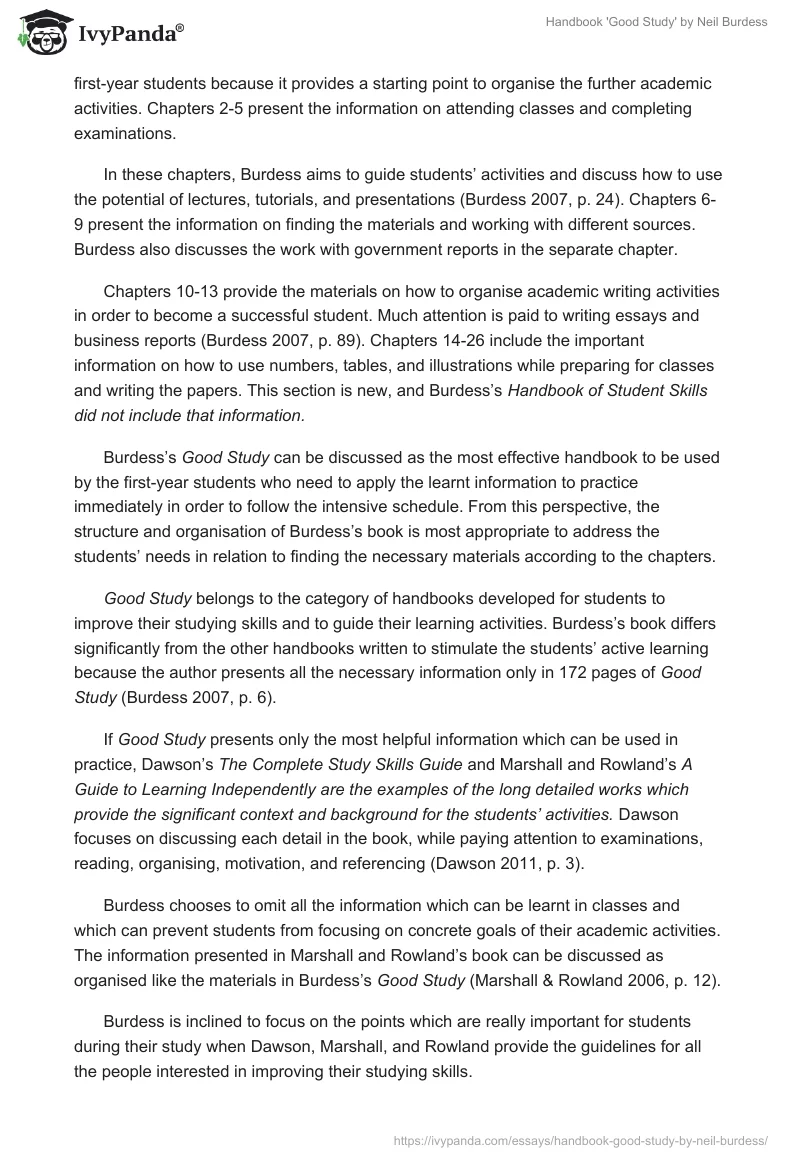Such academic activities as tutorials are important for you in order to contribute to your successful active and independent learning. Organised as discussion groups, tutorials usually provide students with the opportunity to analyse the problematic points and concentrate on the aspects which require the further discussion. Interaction in the form of active listening and discussion is the key feature of tutorials, and the possibility to interact distinguishes tutorials among lectures and other academic activities.
In order to gain more benefits from participating in tutorials, you should prepare the assigned tasks in advance, involve yourself into the active discussion of the topic, ask questions, concentrate on the controversial aspects, collaborate with the group members, and listen to the tutor and students actively. Tutorials provide you with a chance to clarify difficult aspects, demonstrate your interest and involvement, improve your understanding and learning, and develop discussion of a lot of significant details.
The first year of study can become a real challenge for students because of the necessity to adapt to the new forms of academic activities. As a result, students face the necessity to improve their study, research, and writing skills. In his book Good Study (2007), Neil Burdess provides many effective strategies and hints in order to help students to cope with the challenges of the first year of study in the form of a handbook. Good Study of 2007 is the revision of Burdess’s Handbook of Student Skills.
In this new edition, Burdess intends to present the important notes on improving the students’ study, research, and writing skills in the most concise and appropriate form (Burdess 2007, p. 5). The purpose of Burdess’s Good Study is to present the most useful recommendations and guidelines for students in the brief form in order to provide them with the opportunity to concentrate on these hints while studying. Thus, Burdess’s Good Study is a practical guide oriented to students who need to improve their studying skills.
Good Study consists of sixteen chapters which cover such fields of studying as attending classes; retrieving the materials, researching, and selecting the information; academic writing; and using the visual aids. Chapter 1 provides the important information on students’ time management and planning. This chapter is significant for first-year students because it provides a starting point to organise the further academic activities. Chapters 2-5 present the information on attending classes and completing examinations.
In these chapters, Burdess aims to guide students’ activities and discuss how to use the potential of lectures, tutorials, and presentations (Burdess 2007, p. 24). Chapters 6-9 present the information on finding the materials and working with different sources. Burdess also discusses the work with government reports in the separate chapter.
Chapters 10-13 provide the materials on how to organise academic writing activities in order to become a successful student. Much attention is paid to writing essays and business reports (Burdess 2007, p. 89). Chapters 14-26 include the important information on how to use numbers, tables, and illustrations while preparing for classes and writing the papers. This section is new, and Burdess’s Handbook of Student Skills did not include that information.
Burdess’s Good Study can be discussed as the most effective handbook to be used by the first-year students who need to apply the learnt information to practice immediately in order to follow the intensive schedule. From this perspective, the structure and organisation of Burdess’s book is most appropriate to address the students’ needs in relation to finding the necessary materials according to the chapters.
Good Study belongs to the category of handbooks developed for students to improve their studying skills and to guide their learning activities. Burdess’s book differs significantly from the other handbooks written to stimulate the students’ active learning because the author presents all the necessary information only in 172 pages of Good Study (Burdess 2007, p. 6).
If Good Study presents only the most helpful information which can be used in practice, Dawson’s The Complete Study Skills Guide and Marshall and Rowland’s A Guide to Learning Independently are the examples of the long detailed works which provide the significant context and background for the students’ activities. Dawson focuses on discussing each detail in the book, while paying attention to examinations, reading, organising, motivation, and referencing (Dawson 2011, p. 3).
Burdess chooses to omit all the information which can be learnt in classes and which can prevent students from focusing on concrete goals of their academic activities. The information presented in Marshall and Rowland’s book can be discussed as organised like the materials in Burdess’s Good Study (Marshall & Rowland 2006, p. 12).
Burdess is inclined to focus on the points which are really important for students during their study when Dawson, Marshall, and Rowland provide the guidelines for all the people interested in improving their studying skills.
Burdess’s Good Study is an effective book to be used by students who concentrate on their academic success because the information is presented in a concise manner. It is expected that the reader will use the practical hints during the daily academic activities in order to improve the academic performance and contribute to increasing the competence.
The orientation to the practical result is the main distinguishing feature of the book. That is why, the focus on including the hints to work with government and business reports seems to be reasonable in order to add to the students’ knowledge, practical skills, and overall success.
Reference List
Burdess, N. 2007, Good study, Pearson Books, Australia.
Dawson, C. 2011, The complete study skills guide: a practical guide for all students who want to know how to learn, Constable & Robinson, Australia.
Marshall, L., & Rowland, F. 2006, A guide to learning independently, Pearson Books, Australia.


